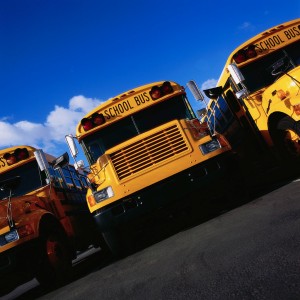By Stephanie D. Shaw
 “Every 33 seconds a child is involved in a crash.”
“Every 33 seconds a child is involved in a crash.”
“6 out of 10 car seats are installed improperly.”
For parents, these statistics might be terrifying and overwhelming. As a parent and volunteer child passenger safety technician, I take comfort in knowing that the best way to protect my own children is the proper use of age-appropriate child safety seats and booster seats. But with so many messages out there—and maybe not the same technical background or experience—how do you know if you’re making the right decisions for your children?
Today, I wanted to share the answers to some of the questions I’ve gotten from parents and caregivers.
Q. When is my child old enough to sit up front with me?
A. Until they properly fit an adult seat belt, they should always ride in the back seat, and they should always use the right child safety seat or booster seat! But different-size children need to be protected differently – read on.
Q. Which child car seat is the safest?
A. All child car seats must meet the same federal safety standards. But car seat designs vary. That’s why it is critical that you look for a seat that is recommended for your child’s height and weight.
Q. So just buy the right car seat?
A. Not so fast. Buying the right seat for your child is the first step. But, it still falls on the adult to install and use the car seat properly every time.
Q. How do I install and use a child safety seat?
A. Read carefully and follow the instructions that came with your car seat and also your vehicle owner’s manual. It’s important to read both, as they provide steps for how and where to install the seat in your vehicle. All children should ride properly secured in a car seat or booster seat in the back seat. If you would like help installing your seat, visit Safe Kids Worldwide to locate a child passenger safety technician in your area.
Q. When do you change from rear-facing to forward-facing seats?
A. Children under the age of 2 are best protected when they are in a rear-facing car seat in the back seat, as their spine and neck are not developed enough to support their head in the event of a crash. Even for children older than age 2, it’s recommended that they remain rear facing until they outgrow the rear-facing height or weight limit for their seat. When children outgrow a rear-facing car seat, they should use a forward-facing car seat with an internal harness and tether.
Q. When is my child ready to ride like an adult passenger?
A. Not until the adult seat belt fits them properly – usually when they are 4’9” tall. Until then, they should use a booster seat. Booster seats help children fit in an adult seat belt. Children seated in a booster seat in the back seat of the car are 45 percent less likely to be injured in a crash than children using a seat belt alone.
Q. How can you tell when an adult seat belt fits them properly?
A. seat belt fits properly when the lap belt lies snugly across the upper thighs, not the stomach. The shoulder belt should lie snugly across the shoulder and chest, and not cross the neck or face.
Q. What are the common mistakes to look out for in using the car seat?
A. Some common mistakes parents and caregivers make include:
- using a forward-facing child car seat too soon;
- installing the car seat too loosely and allowing the seat to move more than one inch at the belt path;
- allowing the harness straps to fit loosely so they fail the pinch test; and
- placing the chest clip too low, rather than at armpit level.
To help avoid some of these common mistakes, read the instructions that came with your car seat and also your vehicle owner’s manual. Reading these instructions will help you determine whether to use a seat belt or the lower anchors, and when to use the tether to secure your seat.
Your car seat instructions will help you position the car seat (rear facing, forward facing, or reclined); properly use the internal harness, chest-clip and buckle; and determine how best they should fit to protect your child.
Q. Can I get hands-on help?
A. You’re in luck! It’s Child Passenger Safety Week. Child passenger safety technicians and other safety professionals will host events nationwide, where parents and caregivers can get hands-on help to ensure their child is in the most appropriate car seat, installed and being used properly. (Such help is also available year-round.)
Car seats, booster seats, and seat belts are a child’s best defense against injury and death in the event of a motor vehicle crash. As a parent and a technician myself, I encourage you to find a car seat check event or child passenger safety technician in your area to make sure you’re using the right seat, every trip, every time.
Saturday, September 24, is National Seat Check Saturday. To find an event in your community, visit www.safercar.gov.
Stephanie Shaw is a NTSB Safety Advocate in the Office of Safety Recommendations and Communications.




